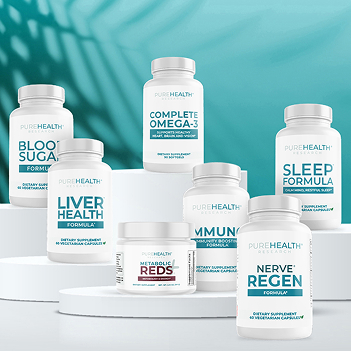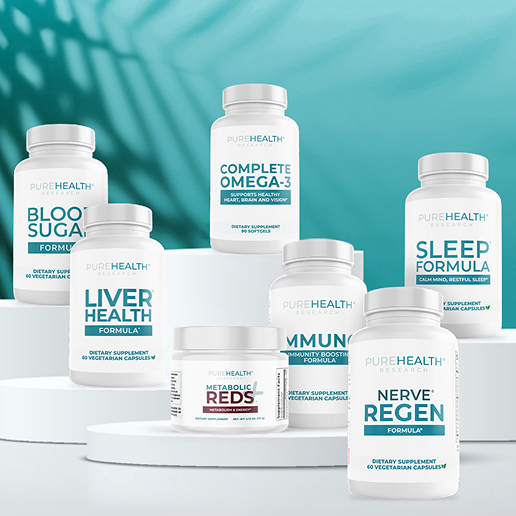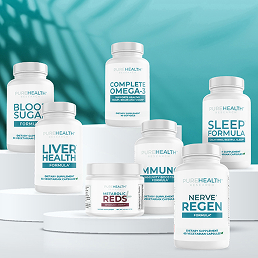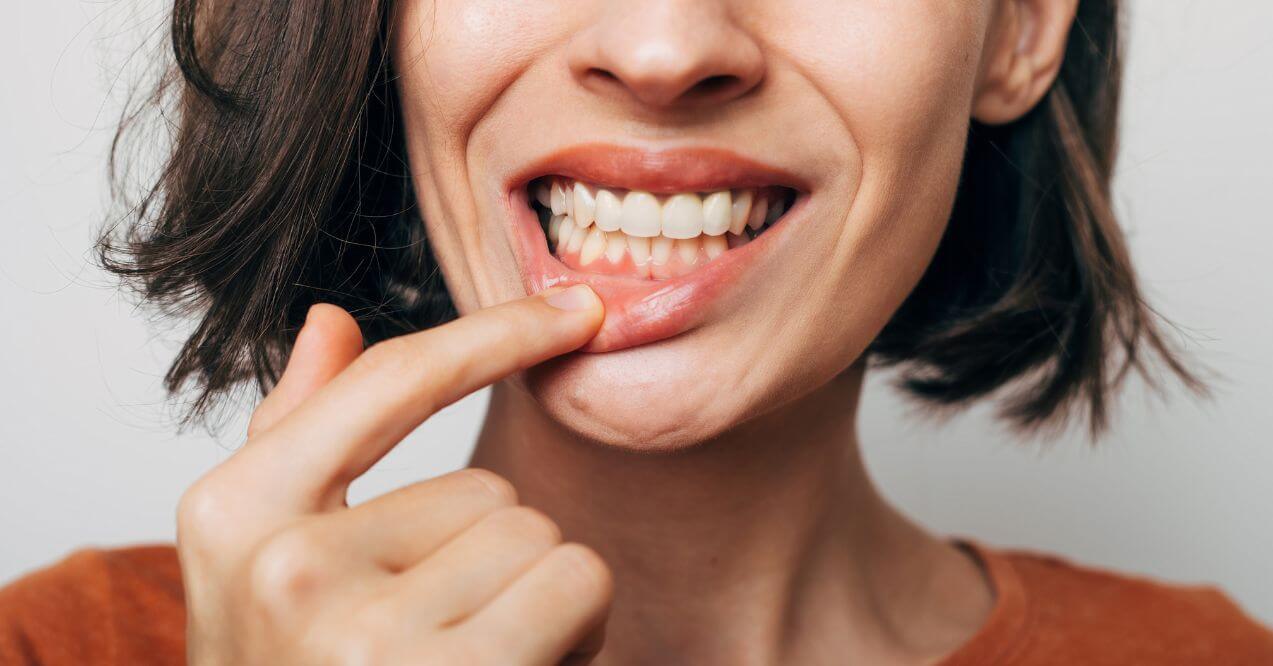Does Tooth Pain Cause Headaches?
Does tooth pain cause headaches? Discover how dental issues like grinding, infections, and sinus pressure may trigger head discomfort.


Tooth pain can be more than just a local issue. It may also cause discomfort in other parts of the body – especially the head. Does tooth pain cause headaches? The simple answer is yes, tooth pain can sometimes be connected to headaches.
Many people are surprised to learn that dental discomfort and headaches can often be connected. This is especially true when the pain feels like it’s spreading from the jaw, face, or one side of the head.
In this article, we’ll explore how tooth pain may influence head discomfort, what can trigger this connection, and simple steps to support your comfort and dental health naturally.
How Tooth Pain Affects Your Head
Tooth pain and headaches are more connected than many people realize. The mouth, face, and head share a complex network of nerves that can easily send pain signals to different areas. When one part of this system is irritated, discomfort can spread.
One key connection is the trigeminal nerve, which serves much of the face, including the teeth and jaw. When this nerve is stimulated by tooth pain, it can send signals that feel like a headache.
Here’s how tooth pain may lead to head discomfort:
- Nerve Pathways – Irritated teeth can activate nearby nerves that also communicate with the head.
- Jaw Tension – Painful teeth may cause clenching or uneven chewing, which can strain jaw muscles and trigger headaches.
- Referred Pain – Sometimes, your brain has trouble pinpointing the exact source of discomfort, so pain from a tooth may feel like it’s coming from your head.
A headache related to toothache can develop gradually or appear suddenly, depending on the source of the tooth pain. By understanding this link, you can better notice when your headache might actually be starting in your mouth.
Common Causes of Tooth Pain-Related Headaches
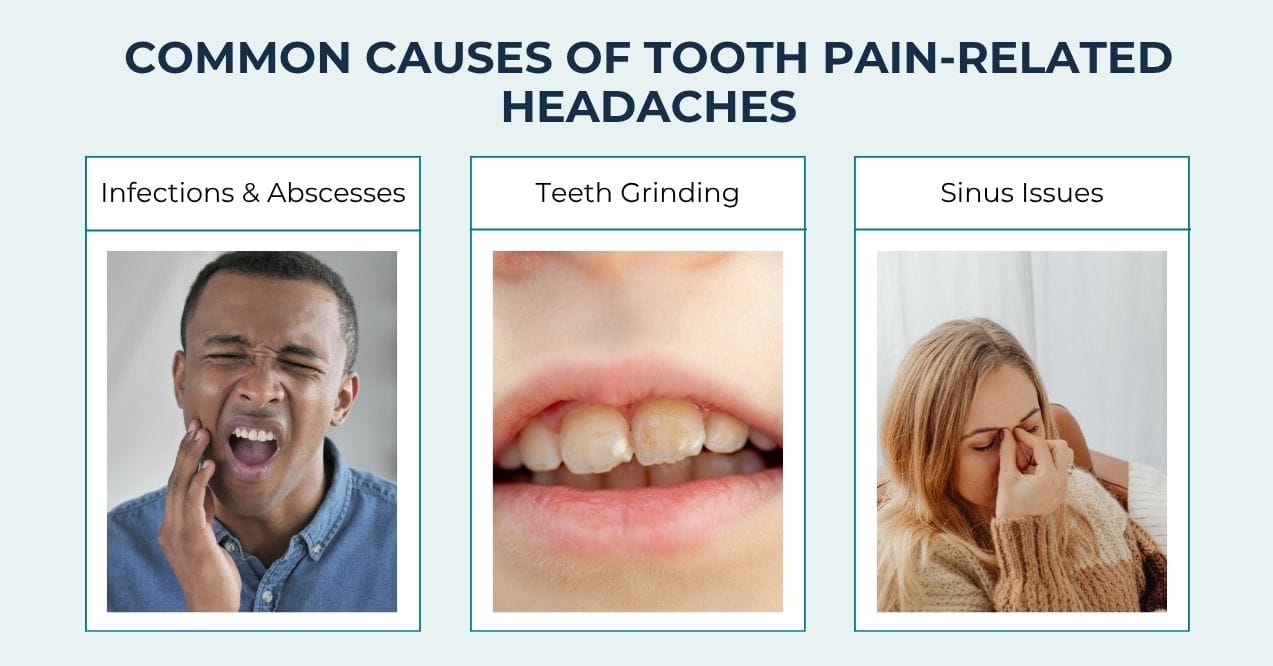
Several dental and facial issues can cause both tooth pain and headaches. When your mouth is under stress or affected by certain conditions, discomfort can easily spread to your head. Let’s look at some of the most common triggers.
Infections and Abscesses
An untreated tooth infection or abscess can place pressure on nearby tissues and nerves. This may cause sharp or throbbing pain that radiates to other areas, including the head. When an infection builds up, it can create ongoing discomfort that feels like a tooth headache.
In some cases, swelling and sensitivity can also develop, making the pain more noticeable when chewing or touching the affected area. Supporting your oral health is an important step to help maintain comfort and balance.
Teeth Grinding
Grinding your teeth or clenching your jaw – often during sleep or stressful moments – can place extra pressure on your teeth, gums, and jaw muscles. Over time, this may lead to tooth pain and tension that travels to the head. A tooth headache caused by grinding may feel like a dull ache or tightness in the temples or jaw. Paying attention to these habits can help you manage discomfort early.
Sinus Issues
Sinus pressure is another possible cause of tooth and head pain at the same time. When the sinus cavities become filled or swollen, they can press against the roots of your upper teeth. This may lead to a tooth headache that feels like soreness in the upper jaw and a dull ache around the cheeks, forehead, or eyes.
Because the discomfort overlaps, it can be hard to tell if the pain is starting in your teeth or your sinuses. Supporting overall sinus comfort may help reduce this type of connected pain.
Can Tooth Pain Cause One-Sided Headaches?
Can a toothache cause a headache that only affects one side? Yes, it can. Tooth pain often leads to headaches that stay on the same side as the affected tooth. This happens because of a process called referred pain, where discomfort in one area – like your tooth – travels along connected nerve pathways to another area, such as your head.
When a single tooth is irritated, the pain signals can follow the trigeminal nerve, which connects the teeth, jaw, and head. This can create a headache that feels sharp, pulsing, or heavy on one side.
Common signs of a toothache and headache on one side may include:
- A steady ache near the temples, jaw, or around one eye.
- Head discomfort that worsens when chewing or pressing on the sore tooth.
- Tightness or tension in the jaw muscles.
One-sided headaches linked to tooth pain can feel similar to other types of head discomfort, which sometimes makes it difficult to find the exact cause. However, when the headache lines up with tooth sensitivity or jaw tightness, it may point to your teeth as the source.
How to Manage Tooth Pain and Headaches
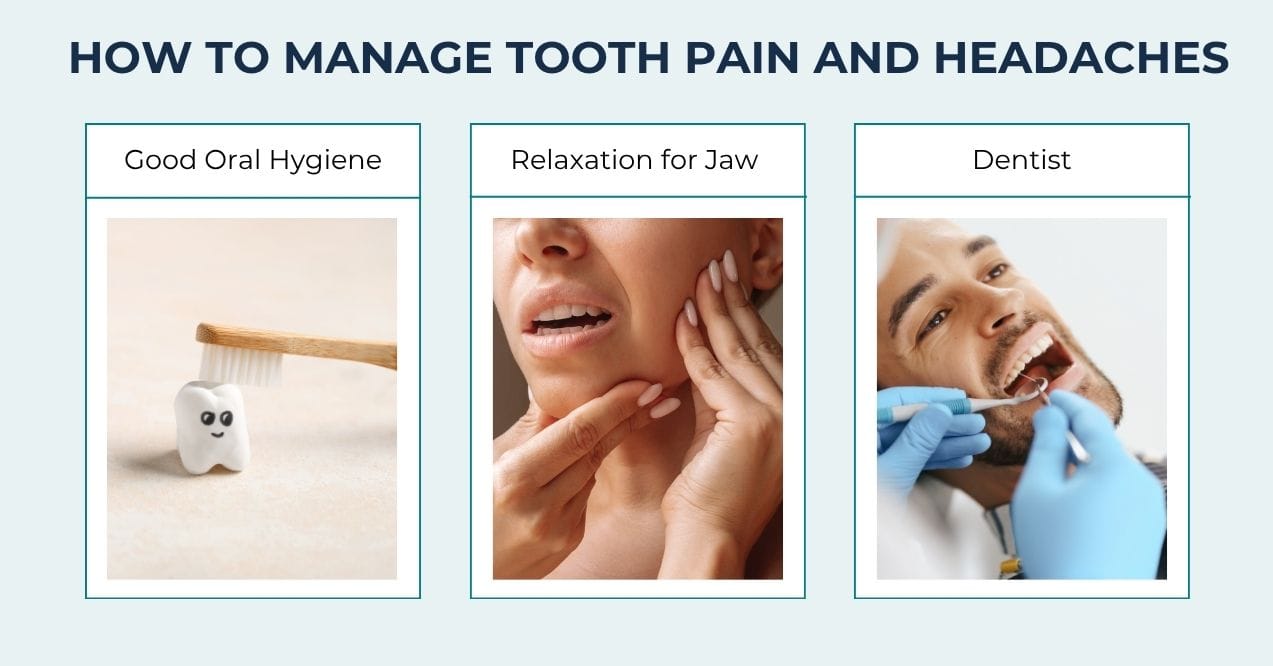
Managing tooth pain and headaches often starts with daily habits and knowing when to seek additional support. Here are a few helpful steps to consider.
Good Oral Hygiene
Keeping your teeth clean and healthy is one of the best ways to support your comfort. A strong oral care routine may help prevent the kind of tooth pain that can contribute to headaches.
Simple steps include:
- Brushing your teeth twice a day
- Flossing daily to remove food between teeth
- Visiting your dentist regularly for checkups
Taking care of your teeth can help reduce irritation that might lead to discomfort in your head.
Relaxation for Jaw Tension
Jaw clenching and teeth grinding often happen during stressful moments or while sleeping. Learning how to relax your jaw can help lower this tension and may support head comfort.
Helpful techniques include:
- Practicing mindful breathing and gentle jaw stretches
- Using a warm compress on your jaw to relax tight muscles
- Wearing a mouth guard at night to reduce grinding
These simple strategies may help lower pressure on your teeth and support overall comfort.
Visit a Dentist
If tooth pain or headaches continue or become more frequent, it’s a good idea to seek professional support.
Consider visiting a dentist if you notice:
- Ongoing tooth sensitivity
- Sharp or spreading pain
- Headaches that don’t improve with basic care
Supporting your oral health daily can make a big difference in your overall comfort and well-being. Along with good dental habits, you may also consider additional support.
Oral Health Support is specially formulated to promote a healthy mouth and help manage occasional discomfort. It contains a powerful blend of Probiotics, Vitamin D, and Xylitol to support bacterial balance, fresh breath, immune system health, and long-term dental wellness. Adding this supplement to your routine can help you maintain a strong foundation for oral care.
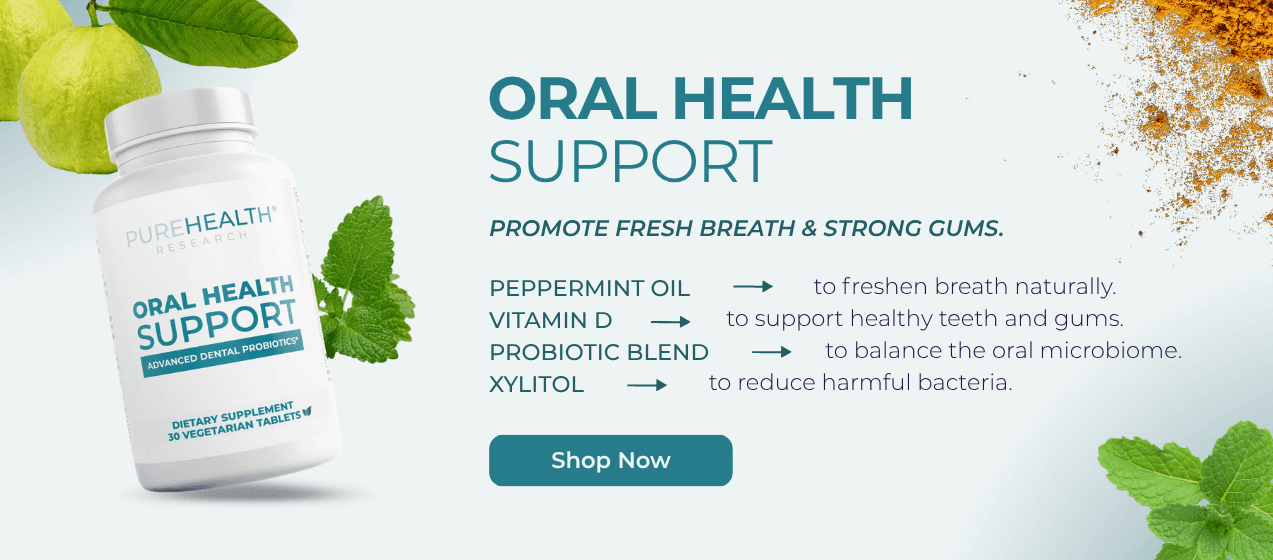
Final Thoughts
So, does tooth pain cause headaches? Yes, it can. Tooth pain and headaches are often connected through shared nerve pathways and muscle tension. Common dental issues like infections, teeth grinding, and sinus pressure may trigger discomfort that spreads to the head.
Paying attention to these signs and supporting your oral health can help you manage both concerns. Simple daily care and mindful habits can make a big difference in maintaining comfort and promoting long-term well-being.
A tooth headache often feels like a dull, throbbing, or sharp ache that may spread from the jaw to the temples or around the eyes. It can worsen with chewing, jaw movement, or pressure on the affected tooth.
Tooth headaches may last for a few hours or persist for several days, depending on the cause. If the underlying tooth irritation continues, the headache can return or linger until the source of discomfort is properly addressed.
The 3-3-3 rule for toothache suggests taking three pain-supporting tablets, three times a day, for three days. However, always follow package directions and consult a professional for proper use, as this is a general reference, not specific medical advice.
Sign up for our Healthy Living newsletter!
Advertisement. This site offers health, wellness, fitness and nutritional information and is designed for educational purposes only. You should not rely on this information as a substitute for, nor does it replace, professional medical advice, diagnosis, or treatment. If you have any concerns or questions about your health, you should always consult with a physician or other health-care professional. Do not disregard, avoid or delay obtaining medical or health related advice from your health-care professional because of something you may have read on this site. The use of any information provided on this site is solely at your own risk.
